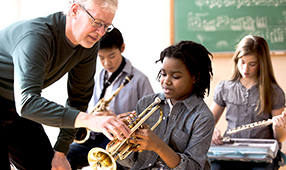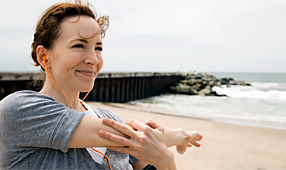Whether you want to train for a 5K, burn off the stress of the school day or lose a few extra pounds, joining a gym can be a great way to achieve your fitness goals. Health clubs are like the classrooms of the workout world: they offer camaraderie, expert supervision and all the equipment you need. Just as a student’s education is greatly influenced by his or her school, the gym you choose could make or break your fitness resolutions.
Here’s how to find a health club that works for you.
Location is key
When you’re strapped for time—and what teacher isn’t?—you don’t want to tack a 40-minute drive onto your workout. According to Kathie Davis, executive director of IDEA Health & Fitness Association, we’re less likely to visit the gym if it’s more than 12 minutes away. The one exception to that rule, says Liz Neporent, co-author of the newly released Fitness for Dummies, 4th edition: if the gym has a specialty you really want that you can't get anywhere else. Narrow down your list of health clubs to those near your home, office or along your daily commute.
Steer clear of overcrowding
Tour health clubs during the hours you’d be most likely to frequent them, says Davis. Take note of whether the equipment and amenities, including showers, parking spaces and lockers are occupied. If you have your heart set on a particular class, make sure it’s offered when you can attend, and that there are plenty of spaces available. Some gyms have waiting lists or reservation fees for their most popular classes. “If it’s a zoo at that hour and you can’t get on a piece of equipment, that’s a deal breaker,” says Davis.
Look for a well-maintained gym
Don’t ignore how you feel when you walk into the gym. “You have to be inspired and you have to like the environment,” says celebrity trainer Lacey Stone, founder of LaceyStoneFitness.com, who teaches at Equinox Fitness in New York City. Signs of a lovingly managed gym include cleanliness (peek inside the bathrooms and showers during your tour), equipment that’s in good shape and a knowledgeable and friendly staff. “If any of these are missing during your tour or trial, they will not get better once you are actually a member,” says Neporent.
Assess the clientele
Take a good look at the people you’ll be sweating next to. If you don’t feel comfortable, you won’t enjoy your workout. “If you’re super intimidated, it’s not a bad idea to go to a Curves or some other facility that caters to real novices,” says Neporent.
Are the amenities worth the price tag?
While it’s great to have every amenity under the sun, you may end up paying more for features you never use. Make a list of your workout preferences and pitfalls to decide what’s worth the extra cash. Parents, for instance, may want a place that offers on-site childcare. Here, a few pointers on whether these extras make sense for you:
- Pools: Good for people who want a low-impact workout, such as those with joint problems or chronic pain.
- Classes: Best for those who get bored easily, or prefer working out with others. Group classes can be intimidating to people who are shy or out of shape.
- Personal training: According to Stone, personal training is one of the best ways to achieve your fitness goals, provided you can afford it. A good personal trainer will give you confidence, motivation and accountability.
Bottom line
Before signing on the dotted line, ask for a free trial membership. Most national chains will give you a free week-long pass. Go as many times as you can during that week, and be sure to use every amenity. Also, use this time to talk to other members; find out what they like or don’t like about the place. Remember that when it comes to working out, we can come up with enough of our own excuses not to exercise. Ideally, your gym will be a place of motivation and inspiration; it should never be the reason you don’t work out.












